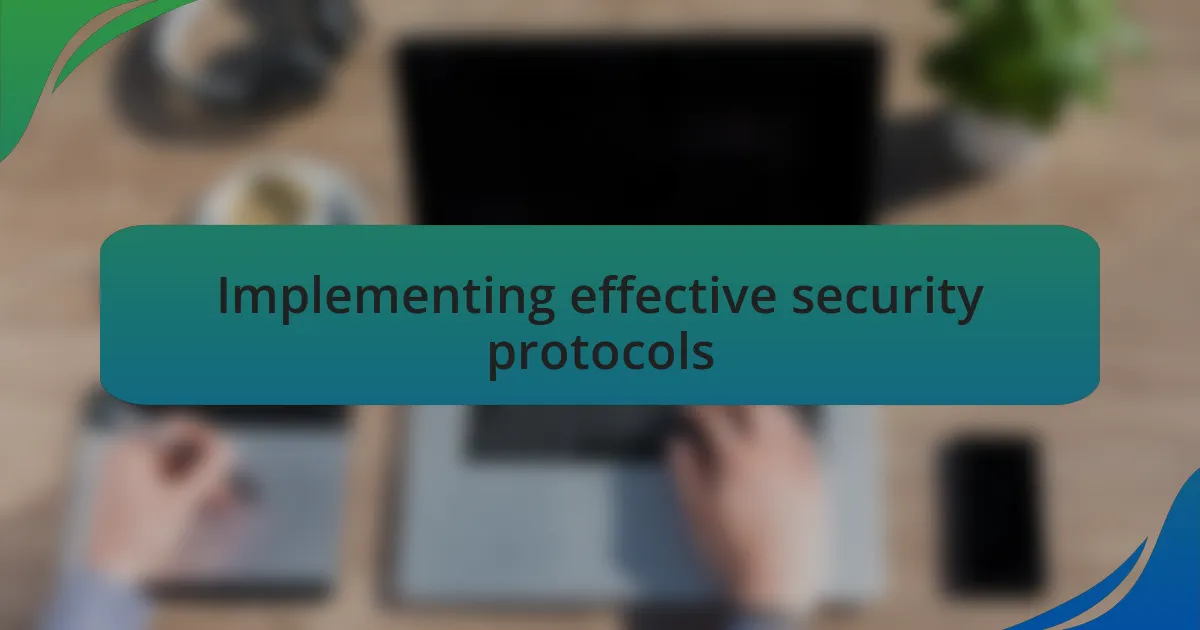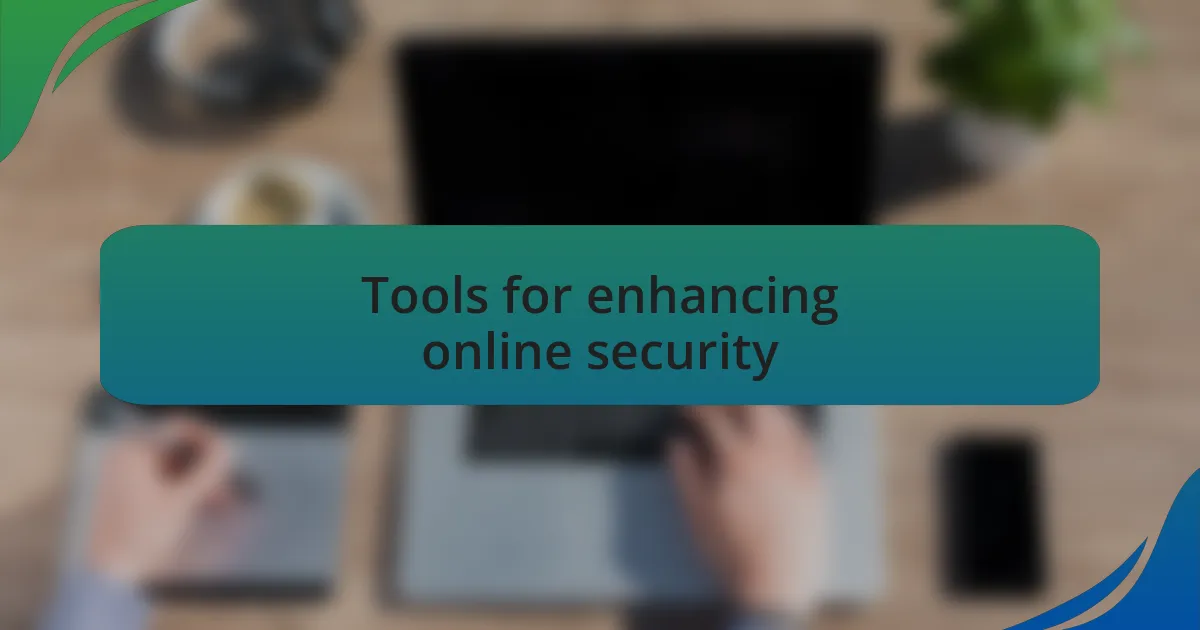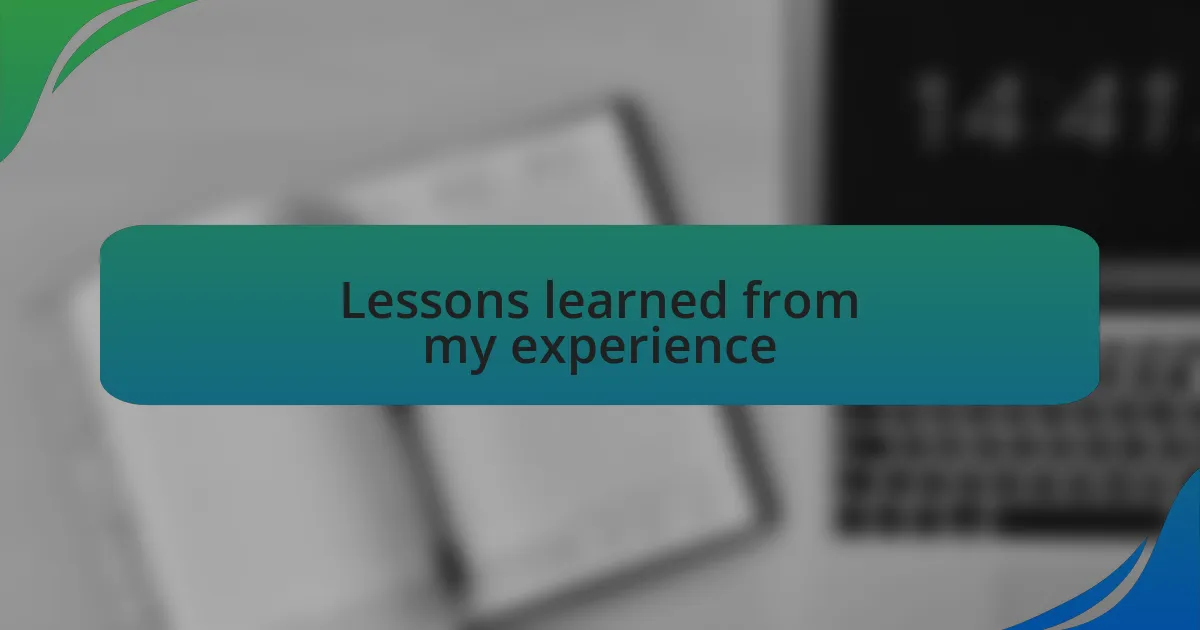Key takeaways:
- Using strong, unique passwords for each account is essential for safeguarding online security.
- Recognizing phishing attempts and double-checking sources can prevent potential scams.
- Implementing two-factor authentication (2FA) significantly enhances security by adding an extra verification step.
- Regular software updates are crucial for closing security gaps and protecting against vulnerabilities.

Understanding online security measures
Online security measures can often feel overwhelming, but I have learned that breaking them down into manageable parts makes them more approachable. For instance, using strong, unique passwords for each site not only safeguards my accounts but also gives me peace of mind. I remember the sinking feeling when I realized a common password I used had been compromised—it was a wake-up call.
Another key aspect is recognizing phishing attempts. I’ve received emails that looked legitimate but had subtle signs of fraud—like a misspelled URL. Have you ever paused to double-check the sender’s email address before clicking a link? That moment of hesitation can save you a lot of trouble.
Understanding two-factor authentication (2FA) was transformative for me. Initially, I viewed it as a hassle, but integrating it into my online routine became second nature. The added layer of security reassured me, knowing that even if my password was stolen, my accounts would remain protected. It’s a simple step that can yield significant benefits—have you considered implementing it in your own online activities?

Implementing effective security protocols
Implementing effective security protocols starts with understanding your own vulnerabilities. I remember when I first evaluated my online habits; it was eye-opening to see how easily I exposed myself. Conducting a security audit—reviewing what data I shared and where—helped me prioritize which protocols to implement first. How often do we overlook the simple act of checking privacy settings on social media profiles?
Equally important is the role of employee training in small to medium enterprises. I once participated in a workshop focused on security awareness, and it was enlightening. The session highlighted how everyday practices, like ensuring software updates are performed regularly and recognizing social engineering tactics, could protect the entire company. When was the last time you engaged your team in a discussion about security best practices?
Lastly, I’ve found that using a password manager has significantly eased my approach to online security. At first, it felt strange to rely on technology for my passwords, but now I can’t imagine going back. These tools not only generate strong passwords but also securely store them, freeing me from the mental burden of remembering each one. Have you considered how a password manager might simplify your digital life?

Tools for enhancing online security
Utilizing two-factor authentication (2FA) has been a real game-changer for my online security. I distinctly recall the moment I enabled it; the extra step of confirming my identity added a layer of reassurance I hadn’t realized I needed. Have you ever paused to think about how much peace of mind a small extra step can provide?
Another valuable tool I’ve embraced is a Virtual Private Network (VPN). I remember traveling for business and connecting to public Wi-Fi in cafes, feeling vulnerable about my data. Using a VPN not only kept my information private but also allowed me to browse securely, making that experience much more comfortable. How often do we overlook the risks of accessing sensitive information on unsecured networks, thinking it won’t happen to us?
Lastly, I can’t emphasize enough the importance of regular software updates. In my experience, I used to delay them, but a friend reminded me that these updates often include crucial security patches. Now, I treat updates as a priority—almost like a mini-security blanket—because it significantly closes the gap on potential vulnerabilities. When was the last time you updated your software to safeguard your digital presence?

Lessons learned from my experience
One significant lesson I learned is the value of strong, unique passwords. I used to think that reusing passwords was a time-saver until I experienced a close call when my accounts were targeted. That moment was eye-opening; I felt a surge of vulnerability that pushed me to create unique passwords for each account. Have you ever felt that knot in your stomach knowing your security could be compromised by a single weak link?
Another insight I’ve gained is the importance of being aware of phishing attempts. I’ll never forget the day I nearly clicked on a deceptive link in what looked like a legitimate email. My heart raced when I realized it was a scam. It reminded me to always verify sources before interacting with any unexpected messages. How often do we rush into things online without a second thought, only to realize the potential consequences?
Lastly, I’ve realized that educating myself—and my team—about online threats is invaluable. Sharing knowledge on topics like social engineering and data protection has created a more security-conscious environment. There’s a certain relief that comes from knowing we are all on the same page and vigilant together. Have you ever thought about how collective awareness can enhance security for everyone involved?